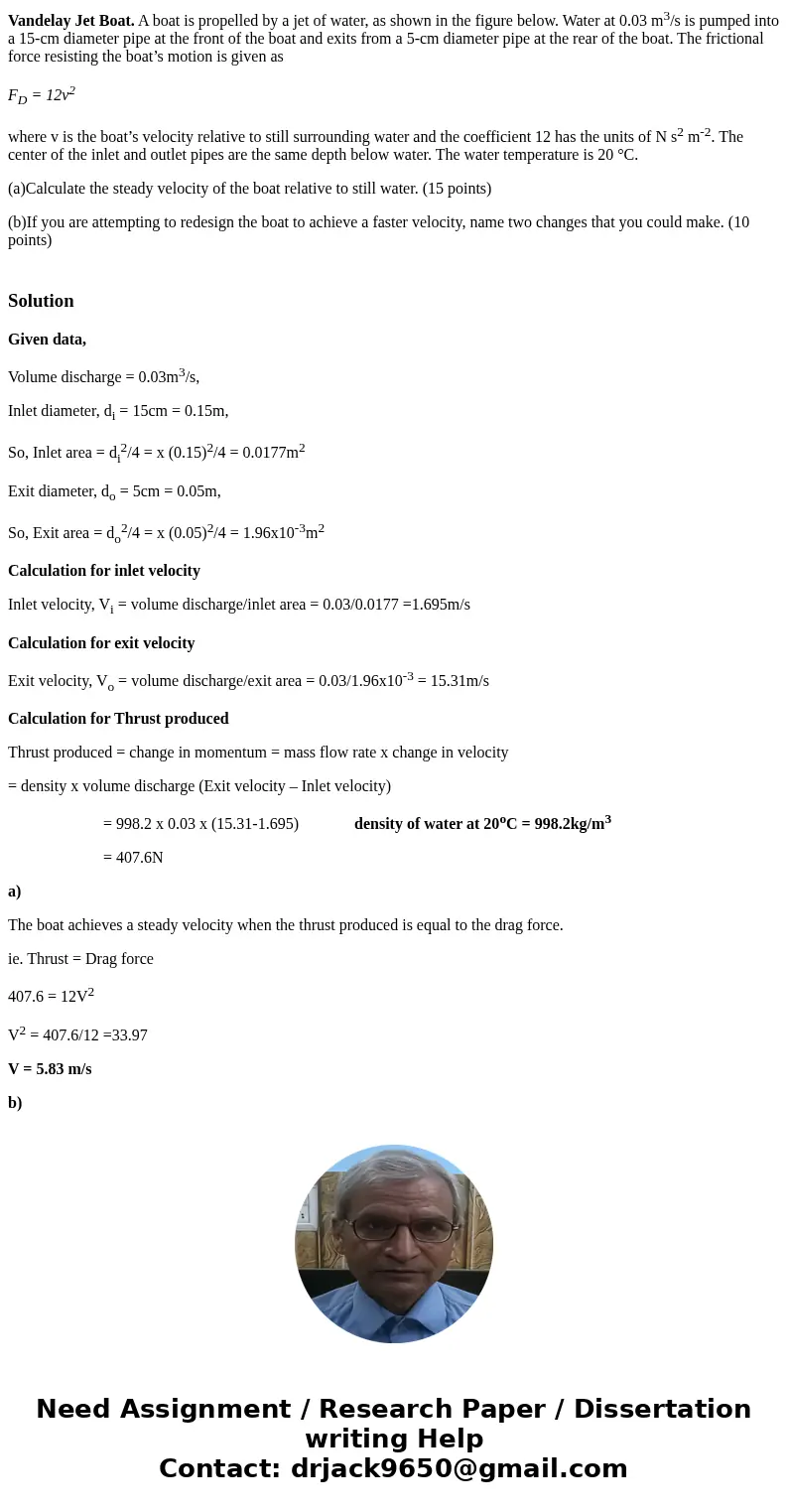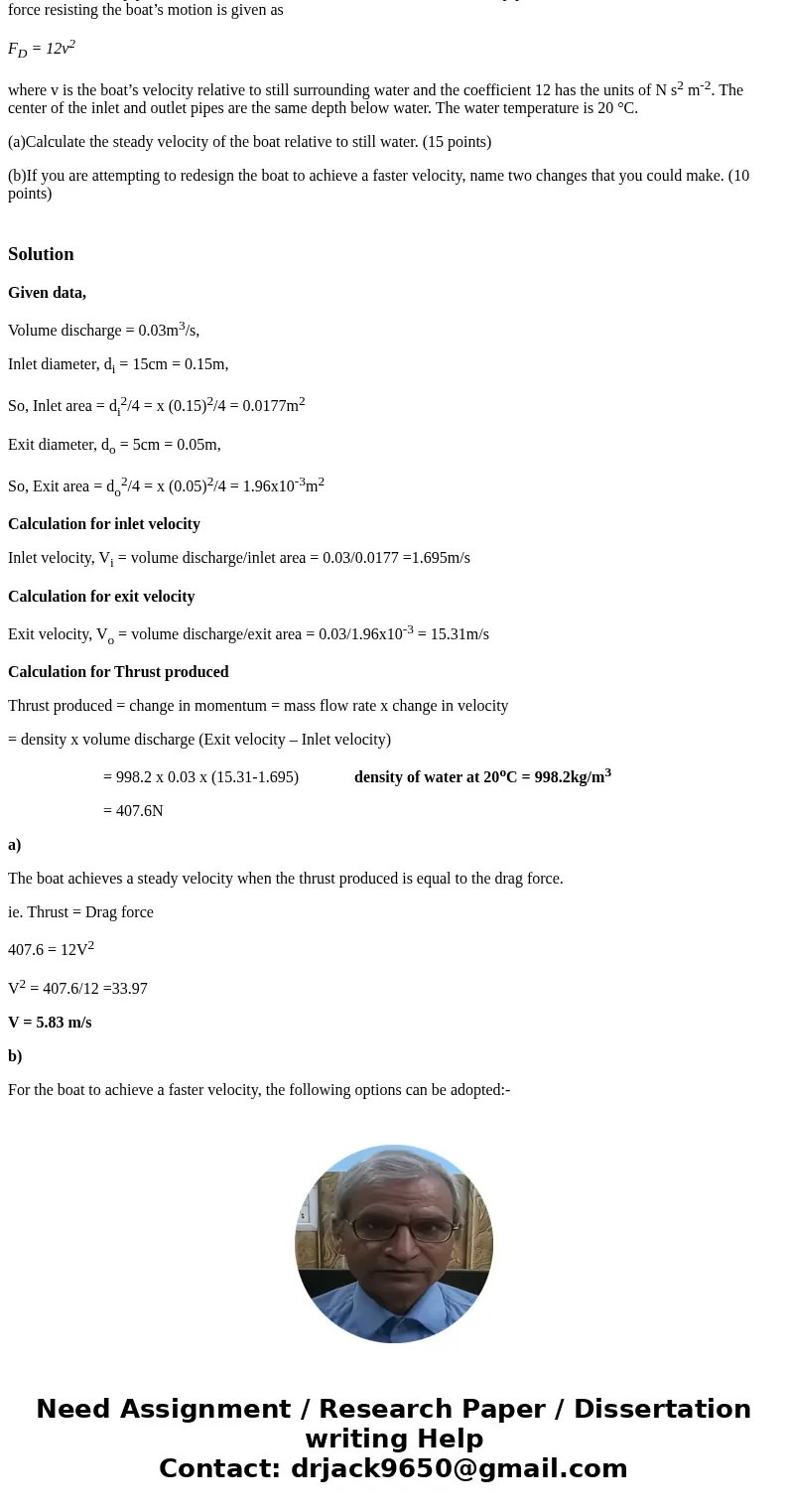Vandelay Jet Boat A boat is propelled by a jet of water as s
Vandelay Jet Boat. A boat is propelled by a jet of water, as shown in the figure below. Water at 0.03 m3/s is pumped into a 15-cm diameter pipe at the front of the boat and exits from a 5-cm diameter pipe at the rear of the boat. The frictional force resisting the boat’s motion is given as
FD = 12v2
where v is the boat’s velocity relative to still surrounding water and the coefficient 12 has the units of N s2 m-2. The center of the inlet and outlet pipes are the same depth below water. The water temperature is 20 °C.
(a)Calculate the steady velocity of the boat relative to still water. (15 points)
(b)If you are attempting to redesign the boat to achieve a faster velocity, name two changes that you could make. (10 points)
Solution
Given data,
Volume discharge = 0.03m3/s,
Inlet diameter, di = 15cm = 0.15m,
So, Inlet area = di2/4 = x (0.15)2/4 = 0.0177m2
Exit diameter, do = 5cm = 0.05m,
So, Exit area = do2/4 = x (0.05)2/4 = 1.96x10-3m2
Calculation for inlet velocity
Inlet velocity, Vi = volume discharge/inlet area = 0.03/0.0177 =1.695m/s
Calculation for exit velocity
Exit velocity, Vo = volume discharge/exit area = 0.03/1.96x10-3 = 15.31m/s
Calculation for Thrust produced
Thrust produced = change in momentum = mass flow rate x change in velocity
= density x volume discharge (Exit velocity – Inlet velocity)
= 998.2 x 0.03 x (15.31-1.695) density of water at 20oC = 998.2kg/m3
= 407.6N
a)
The boat achieves a steady velocity when the thrust produced is equal to the drag force.
ie. Thrust = Drag force
407.6 = 12V2
V2 = 407.6/12 =33.97
V = 5.83 m/s
b)
For the boat to achieve a faster velocity, the following options can be adopted:-


 Homework Sourse
Homework Sourse